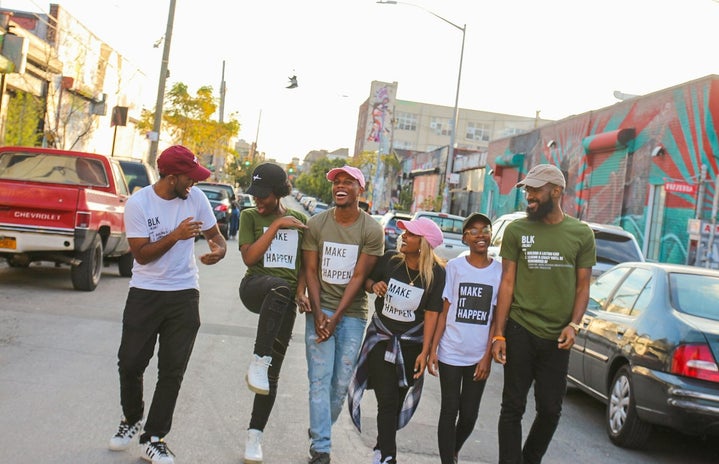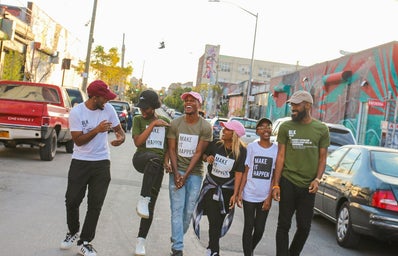When I first stepped foot onto the Carleton University campus last year, something that I immediately noticed was the pockets of Black joy scattered all over. As an on-campus student, I would always see large groups of Black students laughing and hanging out near the residence desk. On my way to my classes, I would hear familiar accents and Nigerian sayings in the hallways—reminding me of home. When cutting through Nideyinàn to get to work, I would spot Black-centered clubs promoting their exciting events.
As a new executive of the Black Student Alliance (BSA), I have been exposed to even more examples of Black culture and community at Carleton. Not only do ‘safe spaces’ exist all over, but the university has taken steps towards investing its resources and finances into establishing formal spaces where Black students can comfortably exist and unwind. Over the past year, I have discovered two centers that really stand out as effective safe spaces: The Racialized International Experience and the Black Student Hub.
THE RACIALIZED & INTERNATIONAL STUDENT EXPERIENCE (RISE)
The Racialized & International Student Experience—RISE for short; is a Carleton University Student Association (CUSA) service center targeted towards racialized and or international students looking for a place to relax, socialize and make friends. Despite it being open to students of all racialized ethnicities, a large portion of Carleton’s international student population are Nigerians—meaning that it has become a prominent hangout spot for members of the Black community.
The space is located in room 316A of Nideyinàn (formerly UC).
Although I knew about RISE since my first year, I only had a chance to go for the first time in October. Many of my fellow BSA execs go there and are close friends with the coordinators. I still remember my first impression of the colourful and dynamic space. Despite being a newcomer, I was immediately greeted upon entering. There were students on the couches, sitting in groups, playing games and talking with each other. It felt open, welcoming and comfortable. The second time I went to RISE, one of the more frequent members came in as I was chatting with others. He was greeted with compliments on his (very stylish) outfit, people asking where he got his crocheted hat, and hugs all around.
Experiences like these are what piqued my interest in the inner workings of the space. So, I sat down with the student Administrative and Programming coordinators: Ngeribara “Nengi” Onengiye and Ededet “Eddy” Udo to discuss their roles and RISE and its place within the broader Carleton community.
Speaking With the Coordinators
During the interview, both coordinators described RISE in the context of diversity, community and well, fun! Nengi started by describing the space as “a hub of diversity where you meet different minorities.”
“It’s like a very good point of intersectionality and it also has a lot of resources for international students,” she said.
Eddy also spoke about the struggles of being a student on campus where “fun [can be] a very limited resource”.
“You don’t want to just separate your life to feeling as though you can relax only on a weekend outside of campus…It’s for everyone you know, come in, chill, hangout, rest, make a friend if you want to, if not that’s also calm.”
The physical space
As a physical space, RISE has some really cool features like the panini press that Eddy excitedly mentioned during the interview; a PS4; and a vast collection of board games. There’s a lot of comfy and colourful seating, which makes the space inviting whenever RISE hosts its in-house events.
Outside of its immediate reach, RISE has a much bigger stake in the Carleton community. As a CUSA Service Center, it partners with clubs by supporting their initiatives and leveraging its larger funding. RISE also takes part in CUSA campaigns like MOSAIC—The International and Cultural Campaign. RISE has its own programs, workshops and events as well—the most recent being Black History Month ceremonies including a BL-Art Showcase and a Rhyme & Radiance poetry event.
Personal connections to RISE
Because RISE is such an impactful space at Carleton, I wanted to get a sense of how it has changed the lives of the students who use the space. The coordinators themselves spoke about their personal journeys with the service center. Eddy is celebrating his one-year anniversary with RISE this month and Nengi spoke about her position as a long-time member who has always loved the space.
“I really love RISE. RISE was there for me when I didn’t have friends [because] of the pandemic,” said Nengi.
“We’re like a weird family.”
I also interviewed two students who frequent the space to discuss why it has such a special place in their hearts.
Student 1
What does the space mean to you?
“A safe space. A space in which you can be yourself and feel fully comfortable in being yourself. A space where you are accepted with genuine warmth and great energy. I think it’s such a privilege to have a space like this considering the fact that it’s very rare.”
What makes RISE different from other spaces on campus?
“The people are amazing, everyone is so sweet and welcoming. I’ve never met a group of people with such positivity and love to give.”
student 2
What does the space mean to you?
“The space [is] what I’d consider a safe haven if nothing else. it’s a place where everyone is accepted as they are, no questions asked. really a “safer” space.”
What makes RISE different from other spaces on campus?
“The friends & opportunities RISE has provided me [with] will last me a lifetime. My time there is something I wouldn’t trade for the world.”
FINAL NOTE
It’s important to remember that RISE is open to all racialized and international students to enjoy the space, its endless resources, and attend their events. Visit their Linktree and website to learn more about their hours, goals, and the ways that their dedicated team can offer support.
The Black Student Hub
While RISE has been a longtime fixture on campus, Carleton has undergone significant Equity, Diversity and Inclusion based changes over the past three years. In 2021, a building re-naming initiative was introduced as a part of the university’s commitment to the recognition of indigenous reconciliation and more general inclusion.
The naming of Teraanga Commons—formerly Residence Commons in 2022; references the Senegalese (Wolof language) word for “generosity of spirit and sharing of material possessions in all encounters, even with strangers.” This sense of oneness and a welcoming community has translated to the unveiling of a new Black Student Hub in room 209 of Teraanga Commons.
The center is fairly new— it opened in October of 2023 and has had a steady stream of students who discover the wonderful space every day.
Being an off-campus student this year, I stumbled upon the Black Student Hub by accident, while on my way to my French class in the same building. A couple of things stood out to me that made it unique to other on campus ‘safe spaces’. The most striking of them all was how exclusive it was. Not only was it restricted to students living on campus, but more specifically to Black Students. There was a passcode by the door, and a poster which highlighted the self- identification form that students needed to fill out to gain access.
Curious to know more, I spoke to the Executive Director and the EDI Officer of Housing and Residence Services—Laura Storey and Kristen Mendonca this past weekend. I was able to learn so much about the features of the hub, their intentions when developing it, as well as what they hope students take out of it.
BASIC FEATURES – WHAT IS THE Black Student HUB?
During the interview, Storey and Mendonca focused their interpretation of the Black Student Hub around the idea of community. Mendonca described the hub as “a space for our Black students to come together and to build community…from within.” The space was intended to pay homage to the unique Black student experience by offering “a different kind of support” than more communal floor-wide events.
Within the physical space, the hub has various activities open to students such as chalkboards, whiteboards, board games and a television. This, and its many other features were largely influenced by student input—something that the Housing and Residence Services plan to implement every step of the way.
Aside from having the space open to students, the Black Student Hub can also be booked by campus partners or groups as long as their proposed event falls within certain parameters. Common questions include:
How is the event benefiting the Black community or Black students and residents?
How are the groups bringing community in?
Will the event engage community building within residence?
pEEKING BEHIND THE CURTAIN
While investigating the Black Student Hub, I was interested in the motivation behind creating the space at this point in time, as well as its timeline. Storey made it clear that despite this having been in the works for a while, the final push was initiated by the renaming of Teraanga Commons and its connotations regarding a celebration of the Black community.
“We [were] like we need to create a space for Black students and we need to do it now… it was a commitment that we made at [Teraanga’s] launch,” she said.
Their intention was to create a space “that’s prominent and…showcases that…[the] feeling of belonging as a Black student in residence [was] important to [them].”
a TEMPORARY SPACE
Despite being a new addition to campus, Storey and Mendonca confirmed that the current room for the Black Student Hub was only a temporary space. With upgrades on the horizon, the new and improved Black Student Hub will also be designed with a significant implementation of Black student input.
Storey: “We’re gonna have… new furniture.” “We’ll have, like, Black student involvement in selecting paint colours and deciding what they want to see in the space.”
Mendoca: “I’m excited to hear from them and have them help build a space for each other.”
a MESSAGE TO THE STUDENTS
As with any safe space, the Housing and Residence staff have left it up to the students to form their own personal relationships with the hub and make it their own.
Storey: “I hope that Black students make it what they wanna make it.” “Our goal was to create or to foster a sense of belonging so that Black students have a space that’s theirs.”
FINAL THOUGHTS
As a newer student to Carleton, it’s been heartwarming to see the steps taken by the university administration and its adjacent student organizations to foster such a welcoming and opening space on campus. This Black History Month, my main takeaway is that identity is meant to be celebrated. Community is at the center of joy, and I hope to see more EDI related developments and initiatives in the future.


